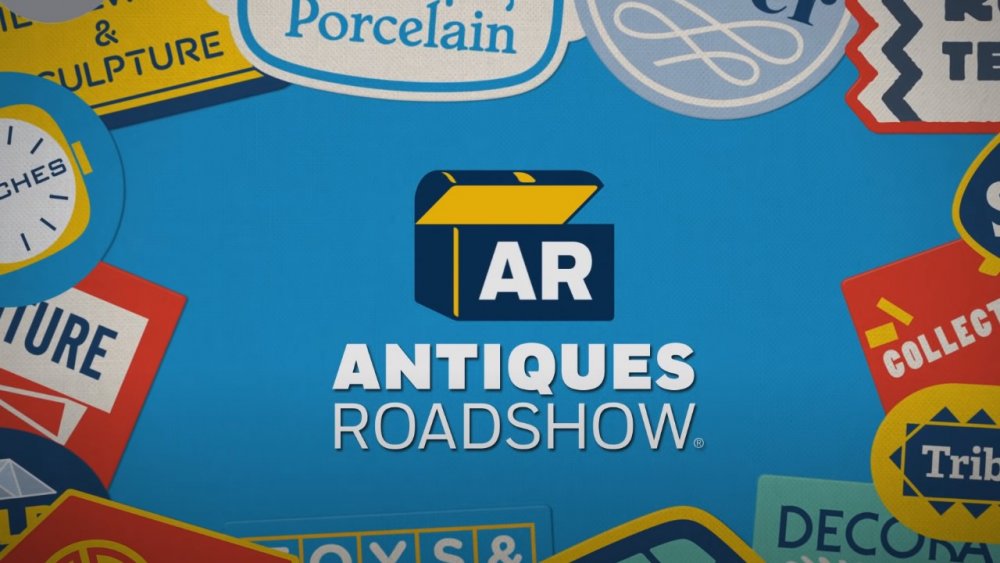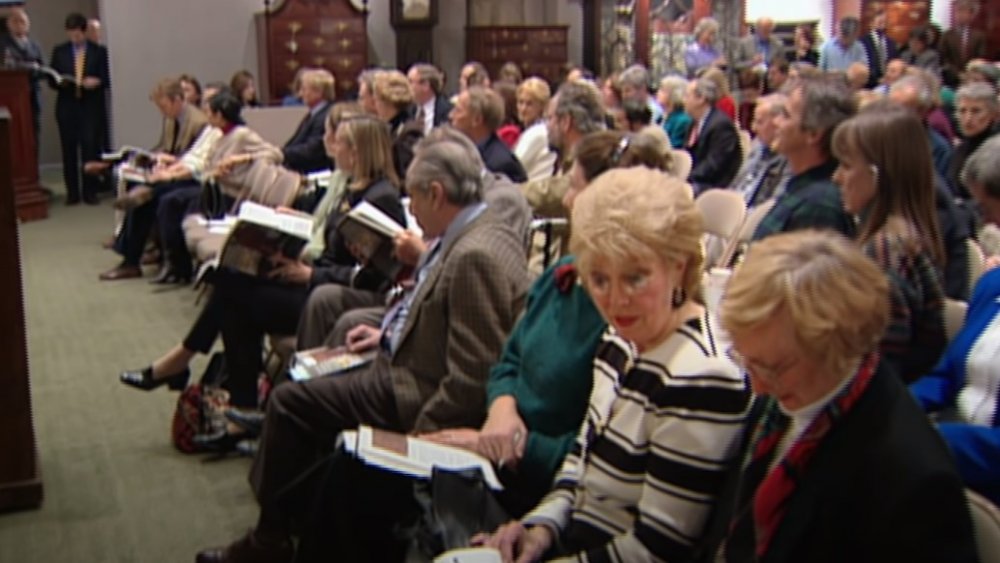Here's What It Really Takes To Get On Antiques Roadshow
It's been the better part of half a century since Antiques Roadshow took to the airwaves in its original British format. Yes, Antiques Roadshow started out as a BBC production. It's a show about people complimenting other people's musky possessions in moderate tones. This shouldn't be a shock.
In 1997, it was adapted for American television, and the PBS mainstay has been convincing folks that their hoarder basements are worth opening-weekend-of-a-Marvel-movie money ever since. It's where people with NPR tote bags go to get their commemorative plates appraised. It's Pawn Stars for people who preferred indoor recess growing up. It's fun.
If you hear the siren song of public television calling out to you, beckoning for a glimpse at the box of dead relatives' belongings in your attic, you might wonder what it takes to be one of those blessed few lucky enough to have an old white person put a number to your possessions on TV. It turns out it's a more arduous process than you might imagine.
Get ready to watch your stuff age in real time
The first thing you're going to want to do is get in line. The second thing you're going to want to do is make peace with being in line, since that's your forever home now.
At least that's how Collectors Weekly describes it. According to them, prospective Antiques Roadshow subjects can expect wait times of around two hours, and that's just the amount of time people spend waiting to get to a room where you'll wait some more.
With the first line in your rear view, you'll sit in a room and count the seconds until one of around 70 appraisers who aren't TV-ready calls you up. They'll look at whatever you've brought, and won't tell you a single thing about it. If it looks interesting, they'll flag down a producer. If the producer agrees that you've got something worth televising, then maybe, just maybe you'll make it to air. If you play your part correctly.
Producers want that salty, seductive drama for which public broadcasting is so well known, so if you already have a good idea of how much your ALF doll is worth, they'll probably cut your segment. One man who brought in a 19th century telescope that he knew was worth a small fortune described the process: "When I asked about putting it on TV, the appraiser said, 'No, you know too much about it, so it's not like you're dumbfounded.'" That's showbiz, baby.

